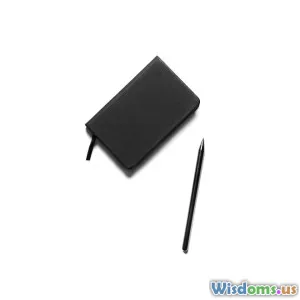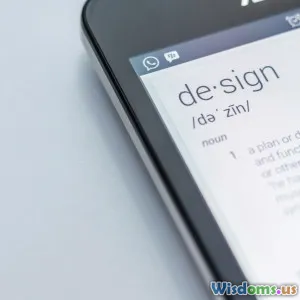
Exploring Minimalism in Design
5 min read Discover the principles of minimalism in design and how they can enhance creativity and communication in graphic design. (0 Reviews)
Exploring Minimalism in Design
Introduction
Minimalism is more than just a trend; it's a design philosophy that emphasizes simplicity and clarity. In the realm of graphic design, minimalism can lead to powerful, elegant solutions that effectively communicate messages without overwhelming the viewer. This article delves into the principles of minimalism, its benefits, and practical applications, providing fresh insights for designers and enthusiasts alike.
What is Minimalism in Design?
Minimalism in design focuses on stripping away the unnecessary elements to emphasize what truly matters. The essence of minimalism is best captured by the phrase, "less is more." This approach encourages designers to prioritize functionality and clarity, allowing the core message to shine through.
Key Principles of Minimalism
- Simplicity: Use of fewer elements to create a clear and concise message.
- Functionality: Every design element should serve a purpose, enhancing user experience rather than detracting from it.
- Whitespace: The use of negative space is crucial in minimalism, allowing the viewer's eye to rest and focus on the essential elements.
- Limited Color Palette: A restrained color palette can create harmony and balance, making designs more visually appealing and easier to process.
- Typography: Minimalist designs often rely on clean, readable fonts, which contribute to the overall clarity and aesthetic appeal.
Benefits of Minimalism in Graphic Design
1. Enhanced User Experience
Minimalism promotes an intuitive user experience. By reducing clutter, designers can guide users toward key actions or messages without distraction. This clarity can be particularly beneficial in web and app design, where users appreciate streamlined navigation and straightforward interfaces.
2. Improved Communication
In graphic design, conveying a message succinctly is vital. Minimalist designs can distill complex ideas into digestible visuals, making it easier for viewers to understand and engage with the content. This is especially important in advertising and branding, where first impressions can significantly influence consumer behavior.
3. Timeless Appeal
Minimalist designs often age better than more elaborate styles. By focusing on foundational elements rather than fleeting trends, minimalist works can maintain their relevance and effectiveness over time.
Practical Applications of Minimalism
1. Branding
Many successful brands adopt minimalist design principles. Consider brands like Apple and Nike, which utilize clean lines, simple logos, and understated color schemes to create a strong identity. This approach not only enhances brand recognition but also reinforces their core values of innovation and performance.
2. Web Design
In the digital age, minimalism is a staple in web design. Websites with a minimalist layout tend to load faster, improve user engagement, and increase conversion rates. By prioritizing essential content and features, designers can create user-friendly experiences that encourage interaction.
3. Print Design
Minimalism can also be effectively applied in print design, from posters to business cards. Utilizing ample whitespace, bold typography, and a limited color palette can create striking visuals that capture attention and communicate messages effectively.
Conclusion
Embracing minimalism in design can lead to striking, effective, and timeless work. By focusing on simplicity and clarity, designers can enhance user experience and communication, making their designs not only visually appealing but also functional and impactful. Whether you're a seasoned designer or just starting, exploring minimalism can open new avenues for creativity and innovation in your work.
In a world filled with noise and complexity, minimalism offers a refreshing perspective, reminding us that sometimes, less truly is more.
Rate the Post
User Reviews
Popular Posts





















